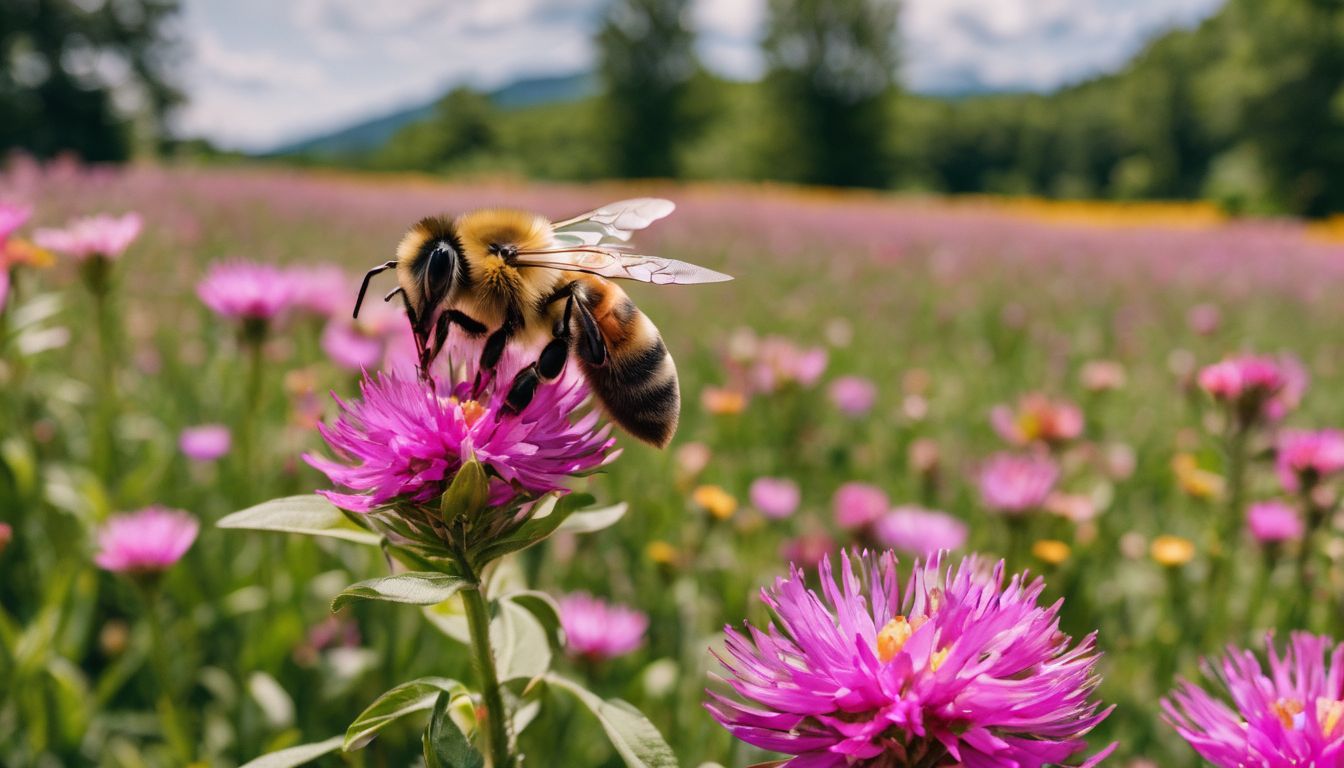Understanding the Connection Between Human Pheromones and Attraction in Sexual Relationships
Have you ever wondered why we’re often drawn to someone without knowing why? Pheromones, our body’s natural chemical signals, are secretly at play in attraction. This post will uncover how these invisible forces influence sexual relationships and may hold the key to that magnetic pull.
Discover the scent of desire!
Key Takeaways
- Pheromones are chemical messengers secreted by the body that influence sexual attraction, mood, and behavior in subtle ways. They are found in sweat, urine, semen, and breast milk and play a part in how we choose potential partners.
- Studies show conflicting results on pheromones’ effectiveness; however, there is consensus that these chemicals affect interpersonal attractions such as increased sexual activity and confidence. Scientists continue to research the specific effects and roles of pheromones.
- Specific pheromones like androstenone, estratetraenol, copulins, and androstadienone have been linked with mating behavior and influencing the opposite sex’s interest. These findings give insight into human relationships from both a biological perspective.
- While animal pheromones often drive instinctual behaviors for mating or marking territory directly, human pheromones contribute to more complex social bonds alongside verbal communication. The distinction highlights differences between human responses compared to those of other species.
- You can increase your natural pheromone levels by engaging in regular exercise; eating foods rich in zinc like oysters; getting plenty of sleep; managing stress levels through relaxation methods like yoga; reducing artificial fragrances usage; and having regular social interactions.
The Science Behind Pheromones
Pheromones are chemical messengers that play a crucial role in attraction, affecting behavioral responses and arousal. Understanding the science behind pheromones can shed light on their impact on sexual relationships.
What are pheromones?
Pheromones are powerful chemical messengers that our bodies release to communicate with others. Often called the “scent of attraction,” these invisible signals can have a profound influence on social and sexual behaviors.
They’re found in sweat, urine, and other bodily fluids, quietly shaping the way we interact on an instinctual level.
The role of pheromones extends beyond mere attraction; they help mothers bond with their infants and even synchronize menstrual cycles among women who spend lots of time together. Substances like androstadienone are steroids found in male sweat that can affect a woman’s mood and arousal levels.
This fascinating area of biology offers glimpses into the subconscious ways we connect with potential partners.
Pheromones and attraction
Released through sweat, urine, semen, and breast milk, pheromones are chemicals that elicit responses in others. These chemical signals can play a part in influencing attraction and desire between individuals.
Pheromones act as an agent of change on behaviors that drive individuals to feel closer, have more desire, and have fewer inhibitions about pursuing intimacy. Studies have shown that female pheromones can have an effect on males, potentially regulating their moods and indirectly impacting sexual attraction.
Secretions linked to mating behavior often feature androstenone—a type of pheromone—potentially explaining the direct link to sexual attraction.
Olfactory communication through the release of pheromones may regulate people’s moods, thus indirectly affecting sexual attraction. The ongoing research aims to better understand the specific effects and mechanisms of human pheromones in sexual relationships.
The Role of Pheromones in Sexual Relationships
Pheromones play a crucial role in sexual relationships, as they are chemical signals that trigger responses in others. These chemical signals can influence attraction and mate selection, as well as sexual behavior and mood.
How do pheromones work?
Pheromones work by influencing sexual and reproductive behaviors through the release of chemical signals. These chemicals, found in bodily secretions like sweat and urine, contribute to olfactory communication between individuals.
They can impact mood, arousal, desire, and even endocrine function through the HPA axis. Additionally, pheromones may regulate behaviors that lead to increased intimacy and reduced inhibitions.
For example, elevated levels of pheromones have been linked to increased sexual activity and confidence among individuals.
Specific pheromones involved in attraction
Pheromones play a critical role in attraction and desire, influencing behaviors in sexual relationships. The following specific pheromones are involved in attraction:
- Androstenone: This pheromone is linked to mating behavior in other species and may have an effect on human attraction.
- Estratetraenol: Known as a female pheromone, it has been shown to influence male behavior and may play a role in attracting the opposite sex.
- Copulins: Produced by women, these pheromones can enhance men’s sexual arousal and desire.
- Androstadienone: This pheromone, found in men’s sweat, has been associated with increasing women’s positive mood and sexual responsiveness.
Differences between animal and human pheromones
Animal pheromones are known to play a crucial role in mating behavior and communication among species, while human pheromones also influence sexual attraction and social bonding. Unlike animals, humans have developed more complex verbal and non-verbal forms of communication.
However, both animal and human pheromones are released through bodily secretions such as sweat, urine, semen, and breast milk.
Specifically, animal pheromones are often linked to fertility cues and mother-infant bonding, whereas human pheromones play a significant role in opposite-sex attractants and same-sex repellents.
Another key distinction is that animal pheromones may be more directly associated with instinctive behaviors like territorial marking or mating rituals. Overall, understanding these differences is essential for comprehending the unique ways in which animal and human beings respond to these chemical signals.
The Impact of Pheromones on Sexual Attraction
Human pheromones can have a significant impact on women’s mood and sexuality, influencing their attraction towards potential partners. There is evidence to support the role of pheromones in human attraction, which continues to be a topic of interest in research and studies.
Effects on women’s mood and sexuality
Female pheromones can impact men’s sexual response and mood. These chemicals influence the hypothalamus, which governs emotions and motivation. A positive mood facilitates women’s sexual response, while increased focus improves sexual satisfaction.
Pheromones contribute to enhanced confidence and perceived sexual attractiveness in individuals who secrete higher amounts of these chemicals.
Women’s sexuality and mood are influenced by pheromones through their impact on the brain’s emotional centers. The subtle release of these chemical messengers can lead to changes in behavior that drive desire, closeness, and a reduced inhibition toward intimacy.
Ongoing research aims to deepen our understanding of how specific human pheromones affect attraction and desire between individuals.
Evidence of pheromones in human attraction
Pheromones play a central role in human attraction, influencing sexual and reproductive behaviors. Studies show that individuals with higher pheromone levels are perceived as more sexually attractive and confident, leading to increased sexual activity.
These chemical signals affect mood and behavior, such as facilitating women’s sexual response and enhancing focus for improved satisfaction. Furthermore, human pheromones released through sweat, urine, semen, and breast milk directly impact bonding between individuals.
Research also indicates that specific pheromones like androstenone influence mating behavior in humans, similar to their effects in other species. Moreover, these chemical communicators act as agents of change on intimate behaviors by fostering closeness while reducing inhibitions towards intimacy – thereby underlying their significance in driving desire and attraction between individuals.
The Use of Pheromones in Attracting a Partner
Pheromone perfumes and products are designed to enhance natural pheromones and attract potential partners. Increasing your own natural pheromones can also be achieved through various methods.
Pheromone perfumes and products
Pheromone perfumes and products harness natural scents to enhance attraction.
- Pheromone perfumes contain synthetic or naturally – derived pheromones that mimic those produced by the body.
- These products aim to enhance one’s natural pheromones, potentially increasing attractiveness.
- Pheromone – based colognes and perfumes are marketed to both men and women.
- Research suggests that pheromone perfumes may positively influence mood and sexual response in women.
- The effectiveness of pheromone products varies from person to person due to individual differences in pheromone production.
- Pheromone – infused lotions and oils also claim to boost attraction by amplifying natural scent signals.
- Some pheromone products target specific types of attraction such as mother-infant bonding or opposite-sex attraction.
Increasing your natural pheromones
To increase your natural pheromones, you can partake in regular physical activity as it boosts the production and circulation of pheromones. Eating a balanced diet with foods rich in zinc and magnesium such as oysters, pumpkin seeds, and dark chocolate can naturally enhance your pheromone levels. Adequate sleep is essential for maintaining optimal pheromone production and increasing attractiveness. Additionally, managing stress through relaxation techniques like yoga or meditation can help regulate pheromone levels. Avoiding excessive use of perfumes or strong-smelling soaps can allow your natural pheromones to be more perceptible. Regular social interactions also contribute to the release of natural pheromones, thereby enhancing your appeal to potential partners.
- Engaging in regular physical activity stimulates the production and circulation of pheromones.
- Consuming a balanced diet rich in zinc and magnesium from sources like oysters, pumpkin seeds, and dark chocolate naturally enhances your pheromone levels.
- Getting adequate sleep is crucial for maintaining optimal pheromone production and increasing attractiveness.
- Managing stress through relaxation techniques such as yoga or meditation helps regulate pheromone levels.
- Avoiding excessive use of perfumes or strong – smelling soaps allows your natural pheromones to be more perceptible.
- Regular social interactions contribute to the release of natural pheromones, thereby enhancing your appeal to potential partners.
The Controversy Surrounding Pheromones and Attraction
Despite the growing research on pheromones and their role in sexual attraction, there is still controversy surrounding their effectiveness. Conflicting findings and skepticism about the impact of pheromones on human behavior have led to ongoing debates in the scientific community.
Studies and conflicting findings
Ongoing research has produced conflicting findings regarding the specific effects and mechanisms of human pheromones in sexual relationships. The results of studies investigating the impact of pheromones on attraction have varied, with some indicating a significant influence on behavior and mood, while others show more modest effects.
Despite these discrepancies, there is consensus that pheromones play a role in influencing attraction and desire between individuals. Furthermore, different studies highlight both oppositesex attractants and samesex repellents as potential responses to human pheromones, adding complexity to our understanding of their impact.
Scientists continue to grapple with the complexities surrounding human pheromones and their influence on sexual attraction. While some findings suggest that specific types of pheromones can trigger hormonal responses associated with attraction and mating behavior, other research points to individual variability in response to these chemical signals.
The future of pheromone research
Pheromone research continues to evolve, exploring the potential impact of these chemical signals on human behavior and attraction. Studies aim to unravel the specific mechanisms behind pheromones’ influence on sexual relationships, shedding light on how these chemicals affect mood, desire, and partner selection.
With ongoing efforts to better understand human pheromones in mating contexts, researchers seek to uncover ways this knowledge can be leveraged for enhancing intimacy and improving sexual satisfaction.
Efforts are underway to advance our understanding of how pheromones may play a role in attracting a partner and fostering stronger emotional connections in sexual relationships. As scientists delve into the future of pheromone research, they strive to examine how these chemical cues could potentially shape individuals’ responses and interactions within romantic contexts.
Conclusion
Understanding the connection between human pheromones and attraction in sexual relationships sheds light on the fascinating role of these chemical signals. Research continues to unravel the intricate mechanisms behind pheromones and their impact on sexual behavior.
As scientists delve deeper, our understanding of how these subtle signals influence attraction and intimacy will undoubtedly expand. The future holds promise for further insights into this captivating aspect of human interactions.
FAQs
1. What role do human pheromones play in attraction?
Human pheromones act as chemical signals and can work as attractants, making people feel drawn to each other in sexual relationships.
2. Can pheromones affect bonding between mothers and infants?
Yes, certain pheromones are important for mother-infant bonding, helping the two form a close emotional connection after birth.
3. Do our bodies use steroids to create attraction through pheromones?
Our bodies produce steroids that can influence human pheromones, which may play a part in sparking attraction among individuals.
4. Are human pheromones just about attraction or can they also repel others?
Pheromones have complex roles; while they often act as attractants in romantic connections, they might also function as repellents under different conditions.









